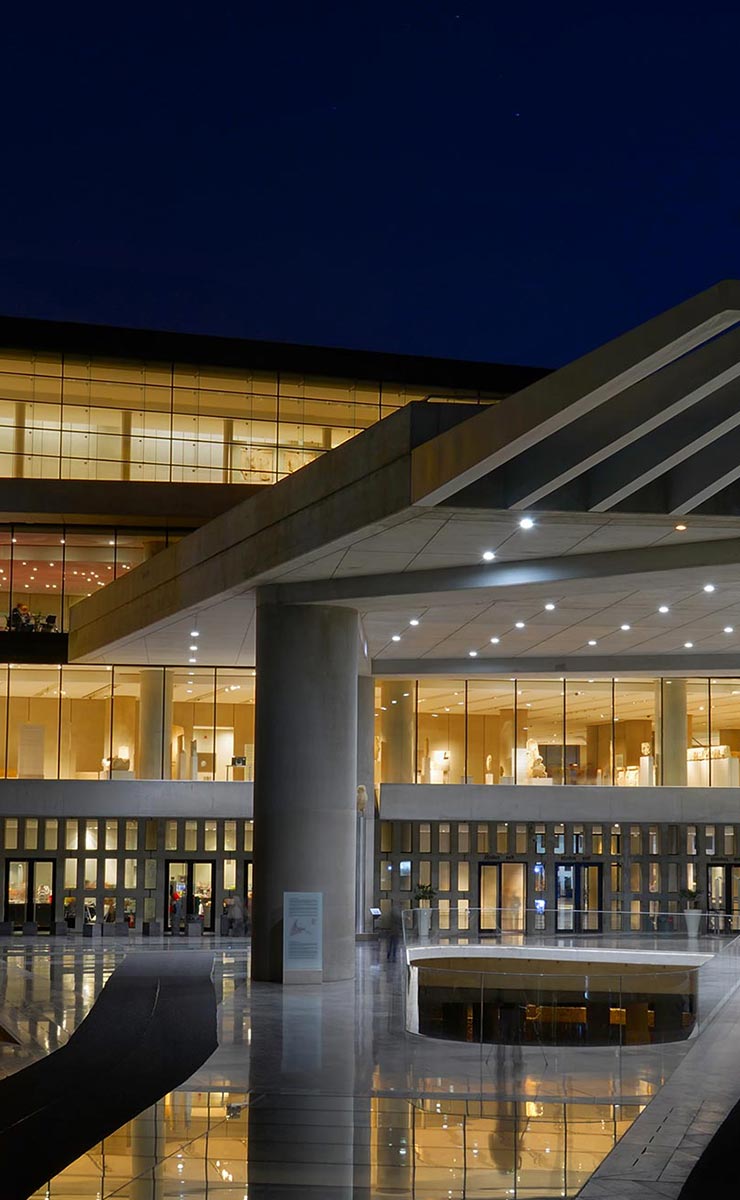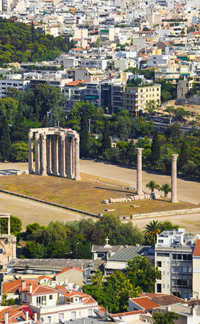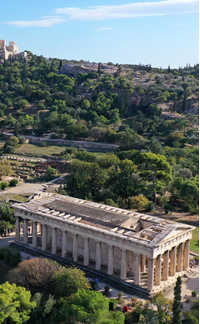Located at the foot of the Acropolis Hill, the Acropolis Museum is a world-class archaeological museum that houses over 4,000 artifacts from the Acropolis of Athens. Opened in 2009, this striking glass-and-concrete structure was designed by Swiss architect Bernard Tschumi and Greek architect Michael Photiadis, offering visitors a seamless fusion of modern architecture and ancient history.
Highlights & Collections
The museum is arranged chronologically over four levels:
- Slopes of the Acropolis: Everyday items unearthed from the ancient Athenian neighborhoods.
- Archaic Gallery: Features statues and votive offerings from before the Classical era.
- Classical Period: A focus on sculptures from the temples and sanctuaries.
- Parthenon Gallery: The crown jewel is the Parthenon Gallery on the top floor. This space mirrors the dimensions and orientation of the Parthenon, displaying a breathtaking reconstruction of its frieze, metopes, and pediments. Original sculptures are combined with plaster casts of pieces currently held in the British Museum, emphasizing the ongoing debate over the reunification of the Parthenon Marbles.
Design & Experience
What sets the museum apart is its transparent flooring, revealing excavated remains of an ancient Athenian neighborhood beneath. Visitors can literally walk above history. Natural light floods the galleries, carefully filtered to preserve the artifacts while enhancing their detail and texture.
Visitor Information
- Location: Dionysiou Areopagitou Street, just 300 meters from the Parthenon
- Hours: Typically 9:00 AM–8:00 PM (longer in summer; check ahead)
- Admission: Around €10 (discounts available)
- Nearest Metro: Acropoli (Line 2 – Red Line)
Insider Tip
Don’t miss the museum café terrace, especially during sunset. It offers one of the most scenic, underrated views of the Acropolis — perfect for a coffee or glass of wine after exploring.
Why Visit
Whether you’re a history enthusiast or a curious traveler, the Acropolis Museum is a must-see in Athens. It provides a powerful, immersive understanding of ancient Greek culture — in a setting as impressive as the treasures it holds.


















